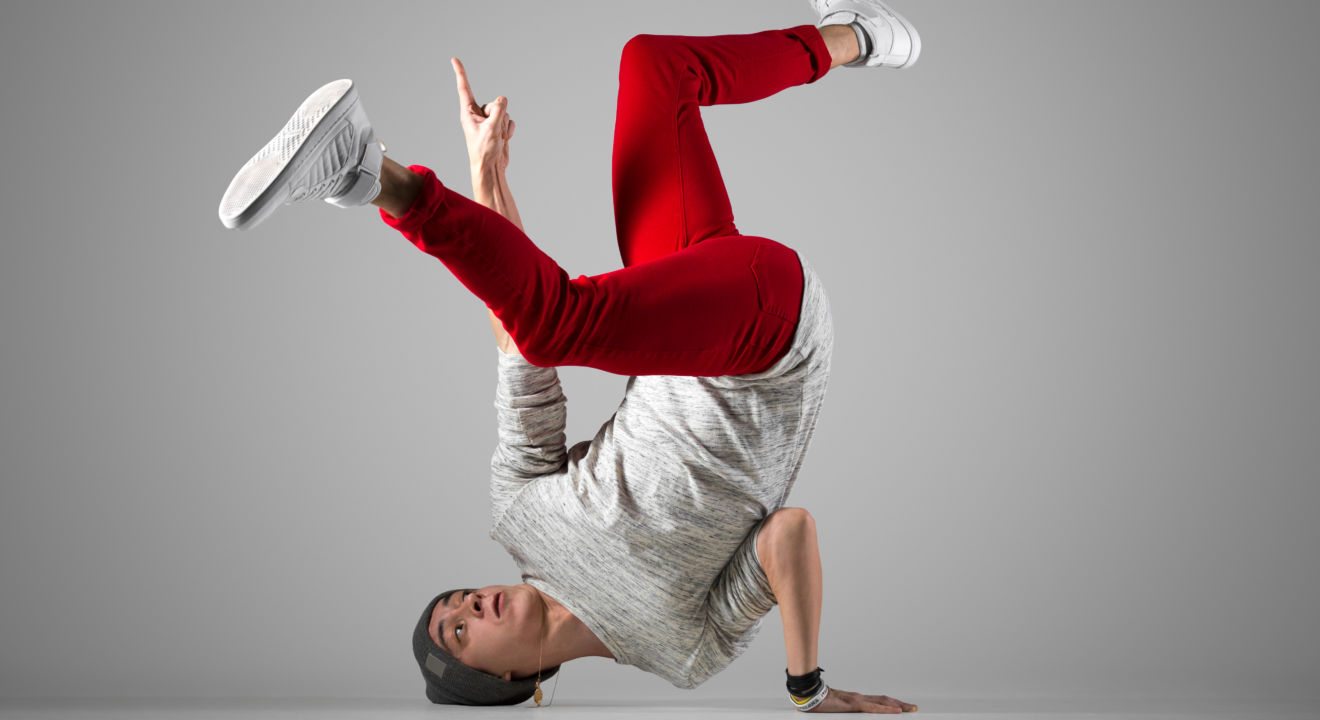Entertainment November 22, 2016


In 1898, Thomas Edison recorded a video of a young street performer doing walk over head spin. Was this the first ever breakdancer? Serious breakers would disagree. In fact, breakdancing isn’t even the correct term to use for this style of dance; it is traditionally known as breaking, or b-boying, and wasn’t called breakdancing until the media started exploiting the art form as entertainment in the 1980s through the early 2000s.
Breaking began on the streets of New York City in the early 1970s, launched primarily by African-American and Puerto Rican youth. B-boy pioneers Richard “Crazy Legs” Colon and Kenneth “Ken Swift” Gabbert named the energetic performance James Brown on “Get on the Good Foot” and Kung Fu films as their artistic influences. Later, break moves were taken and modified from gymnastics and martial arts.
READ MORE: Belly Dancing Is Definitely Something You Should Try to Learn
Breaking consists of four main kinds of movement: toprock (the standing position), downrock (in which both hands and feet are supporting the dancer on the floor), power moves (acrobatic moves that require momentum and control) and freezes (poses requiring suspension off the ground with the use of the upper body strength).
Originally, breakers danced to hip hop, funk and breakbeats, which were first created by DJ Kool Herc, who took the breakdown sections of dance songs and looped them, giving the dancers time to display their skills in competitions.
Now, breakers dance to diverse musical sounds. However, their styles have become much less varied. Before, breakers from different regions around the world were developing their own style and moves, making the dance unique in each city. Now, with the invention of YouTube tutorials, breakers around the world develop the same moves and styles seen online, leading to the common perception that breakdancing is uniform and less individualistic.
READ MORE: Cuba Culture: Dance, Music and the Afro-Euro-Spanish Melting Pot
Breakdancing started losing it’s reputation in the mid 1980s, after the media had played it out with several movies, TV shows, televised performances and a massive performance for the closing ceremony of the 1984 summer Olympics in Los Angeles. After the media turned b-boying into a gimmick, many breakers stopped dancing because they didn’t want the ridicule.
The reputation of breaking is slowly being rebuilt, however, with the help of global championships sweeping the globe. Battle of the Year (BOTY), the most famous competition, hosts qualifying tournaments all over the world in preparation of the big day. BOTY has even been featured in two films – Planet B Boy and Battle of the Year – helping to reshape the breakdancing image in the media.
In addition to BOTY, breakdancers are reclaiming their craft and demanding respect with other b-boying competitions such as Red Bull BC One and R16 Korea. But what about b-girls? While there are not a lot of competitions for females, women are definitely on the breaking scene. B Girl Firefly proves women can move too, and will hopefully lead the movement toward more female opportunities in the industry.